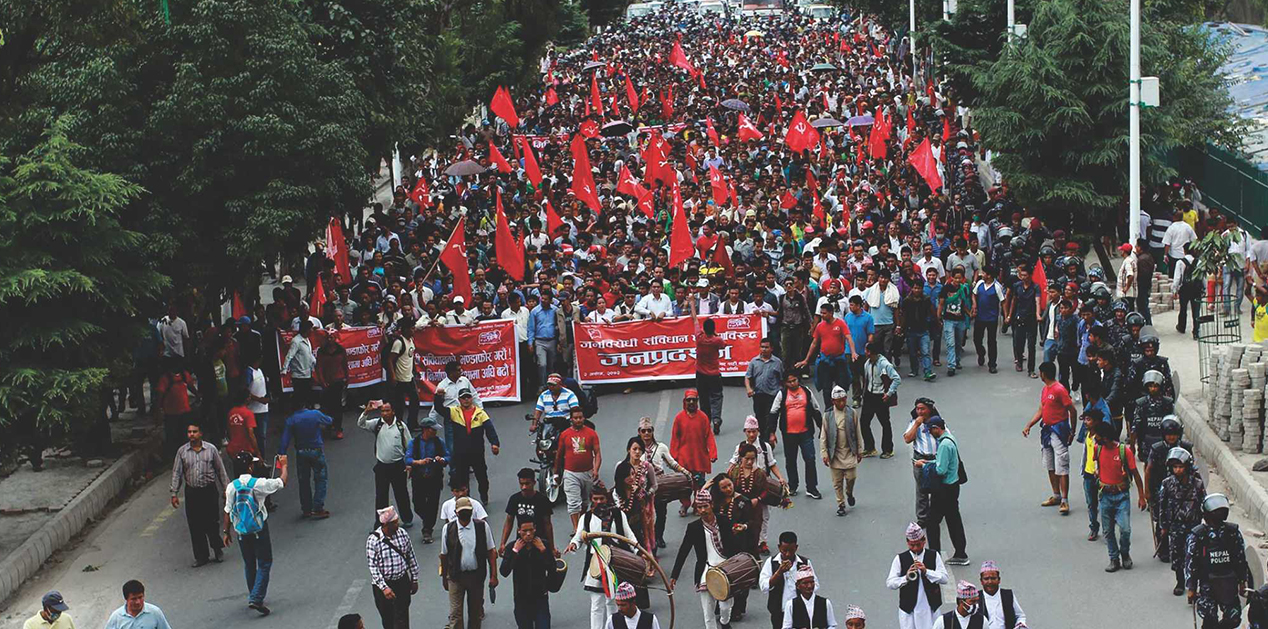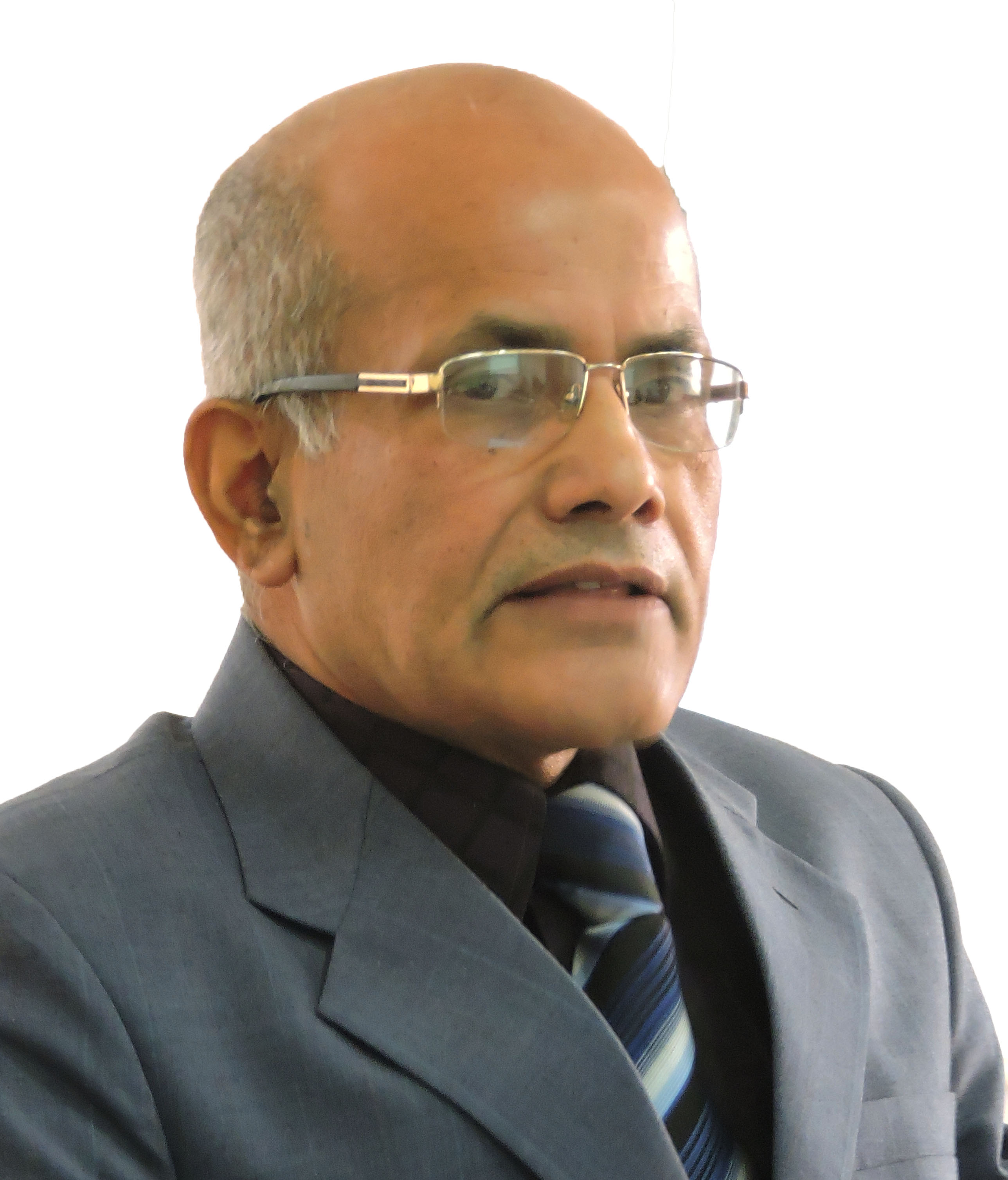The Madhesh movement that started in June 2015 against the 16-point deal to draft Nepal’s new constitution on “fast track” approach is continuing unabated till today. Amidst most fierce opposition to the constitution by the Madheshi people, it was promulgated on September 20, 2015. But the irony is that it has not been implemented even after nine months of its promulgation.
During the Madhesh movement, around 60 people were killed; while thousands of them were injured. The six months of strikes in Terai and five-month of blockade of Nepal-India border, particularly at Birgunj-Raxaul crossing point, created acute shortage of essential goods like cooking LPG gas and petroleum products and paralyzed the economy. During the period of economic blockade, each month the Nepalese economy suffered economic loss of $ 2 billion. As a result, the rate of economic growth of the country has now turned to be negative.
Despite the set-back to the nation, the Madheshi issues got internationalized. In the press communiqué released at the end of the visit of Indian Prime Minister Narendra Modi to Britain in November 2015 and his visit to Brussels this year in 2016, the Nepalese politicians were asked to make the constitution inclusive to ensure long term peace and stability in the country. Madheshi issue was also discussed in different UN forums, including in Geneva.
Indian Prime Minister during his visits to Nepal and also through the diplomatic channels tried his best to pursue the political leaders of Nepal to make the constitution inclusive. The USA also toed to the Indian line and asked the Nepalese government to accommodate the concerns of the agitating groups in the constriction.
For nearly 250 years, the Madheshis have been victims of discrimination by the state. Therefore, they want to establish two states in the Terai under the federal system, which could give them identity and opportunity of self-rule. They also want electoral constituencies to be based on population rather than geography. If geography is made base in the formation of electoral constituencies, the hill-origin voters would get far more of weigtage in voting than the Madhesi voters, which is against democratic principle. Additionally, the Madheshis want to have proportional representation in state mechanism and correction of discriminatory clauses of citizenship laws that prohibit the children of those of them who marry with foreigners from reaching top positions in the government and constitutional organs.
Unfortunately though, whenever the Madheshis along with Janajatis and other disadvantaged groups raise voice against ages-old discrimination by the state towards them, Kathmandu accuses India for such development. This is intentionally done to divert people’s attention from the core demands of the Madheshis to India. As if this is not enough, the Madheshi people are branded as fifth columnist of India.
Often misleading and fictitious views are floated to discredit India along with the Madheshis. Recently, in one such piece mention is made of certain fictitious Indian doctrine that worked behind Madheshi people’s demand for the formation of “One Madhesh Two Provinces.” Even the demand of the Madheshis to end discriminatory clause in the constitution in regard to citizenship was said to the brainchild of certain Indian doctrine. This is total injustice to the Madhesh cause.
It is to be noted that Nepal’s Prime Minister Girija Prasad Koirala himself signed an agreement with the Madheshi leaders eight years ago in 2008 for the formation of “One Madhesh - One Pradesh” with right to self-determination. This agreement was made much before any such fictitious doctrine came out. And, the Madheshi people have been raising citizenship related issues since 1950s. Millions of people in Terai have been living as stateless citizens for the lack of citizenship certificates. As such, they are not in a position to enter into economic activities and get government jobs.
After the government turned deaf years towards the demands of the Madheshis during the movement, the Madheshi leaders recently joined hands with the hill Janajati groups by forming Federal Alliance, which is the alliance of 29 Madheshi and hill Janajatis groups. Before launching joint protest programmes, the Federal Alliance submitted 26-point demand to the government, which included provision like rewriting the constitution. Together, the Madheshis and hill Janajatis form over two-thirds of Nepal’s total population. Their joint anti-constitution protest symbolizes that the majority of the country’s population are against it.
Most importantly, the Madheshi and hill Janajati leaders started launching different protest programmes in Kathmandu Valley from May 14 last. The base of the movement against the constitution was shifted from Terai region to Kathmandu. In this regard, Singha Durbar, the main administrative wing of the government of Nepal, along with the official residence of the Prime Ministery was picketed. Besides, rallies were organized in different parts of Kathmandu Valley. And finally continuity has been given to relay hunger strike in Kathmandu as mark of protest against the new constitution.
Understanding the seriousness of the situation, the government recently sent letter to United Democratic Madheshi Front (UDMF), one of the constituents of Federal Alliance, to come for talks. But the UDMF put certain conditions for talks with the government, which include the implementation of past agreements like the 22-point agreement signed between the government and Madhesh People’s Rights Forum, Nepal (MPR- F) in 2007 and the 8-point agreement signed between Prime Minister Girija Prasad Koirala and UDMF after the second Madheshi Movement in 2008. In those agreements, the government not only agreed to grant the Madheshis autonomous state in Terai with right to self-determination, but it also agreed to provide them proportional representation in each sector of state mechanism. Besides, the Madheshi leaders also wanted government to implement 11-point demand of UDMF and 26-point demand of Federal Alliance. The UDMF leaders put up such pre-conditions to the government following the failure of 36-rounds of talks that they had with the government in the past.
However, instead of becoming serious in dealing with the Federal Alliance groups the government declared programmes for restructuring the judiciary system of the country with a view to implementing the constitution. Each of the federal state will have at least one high court if the constitution is implemented. In addition, the government also decided to hold local elections in mid-December 2016, provincial elections in mid-June 2017 and elections of federal parliament in mid December 2017.
Confrontation between Kathmandu and the Federal Alliance is imminent if the government tries to implement the constitution by holding elections at different tiers without addressing the grievances of the agitating groups. Of all the demands of the agitating groups, the central one is the boundary demarcation of the provincial states. Only province number two with eight districts has been allowed to stay as Madhesh-dominated region. Other twelve districts of Terai with majority of Madheshi population have been mixed up with the hills. The Madheshis want only one or two undivided states in the Terai as per the agreement with the government. Similarly, the hill Janajati groups also want ethnic-based states at least in those regions where the Magar, Gurung, Sherpa or Kirati hill Janajati ethnic groups have traditional hold.
In certain quarters, there is a perception that Nepal could address the present crisis if it reverts back to unitary system from the federal system and electoral constituencies for the House of Representatives, the lower House of the Parliament, are based on population. Since there will not be states in the unitary system, the provision of National Assembly, the upper House of the Parliament would have to be scrapped.
But the fact is that Nepal cannot go back from federal system to unitary system that easily as that could invite further instability in the country. Therefore, the constitution needs to be amended, if not re-written, in a way that it accommodate the demands of the Madheshis, hill Janajatis, Dalits and other marginalized groups. It is only then that the agitating groups could take ownership of the constitution and allow it to be implemented. Any effort to impose the constitution on the agitating groups without addressing their grievances is sure to become counter-productive.
Jha was formerly Professor of Economics in Nepal’s Tribhuvan University
Published Date: 23rd June 2016, Image Source: http://www.srilankaguardian.org
(Disclaimer: The views and opinions expressed in this article are those of the author and do not necessarily reflect the official policy or position of the Vivekananda International Foundation)











Post new comment